Group Group I (dsDNA) Higher classification Caudovirales | Order Caudovirales Rank Family | |
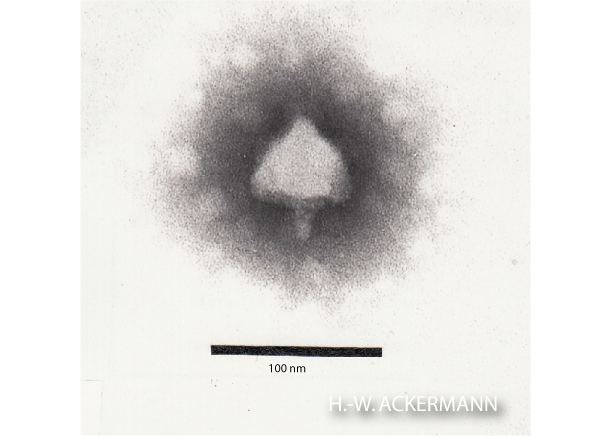 | ||
Similar Myoviridae, Siphoviridae, Caudovirales, Microviridae, Tectivirus | ||
Podoviridae is a family of viruses in the order Caudovirales. Bacteria serve as natural hosts. There are currently 50 species in this family, divided among 20 genera. This family is characterized by having very short, noncontractile tails.
Contents
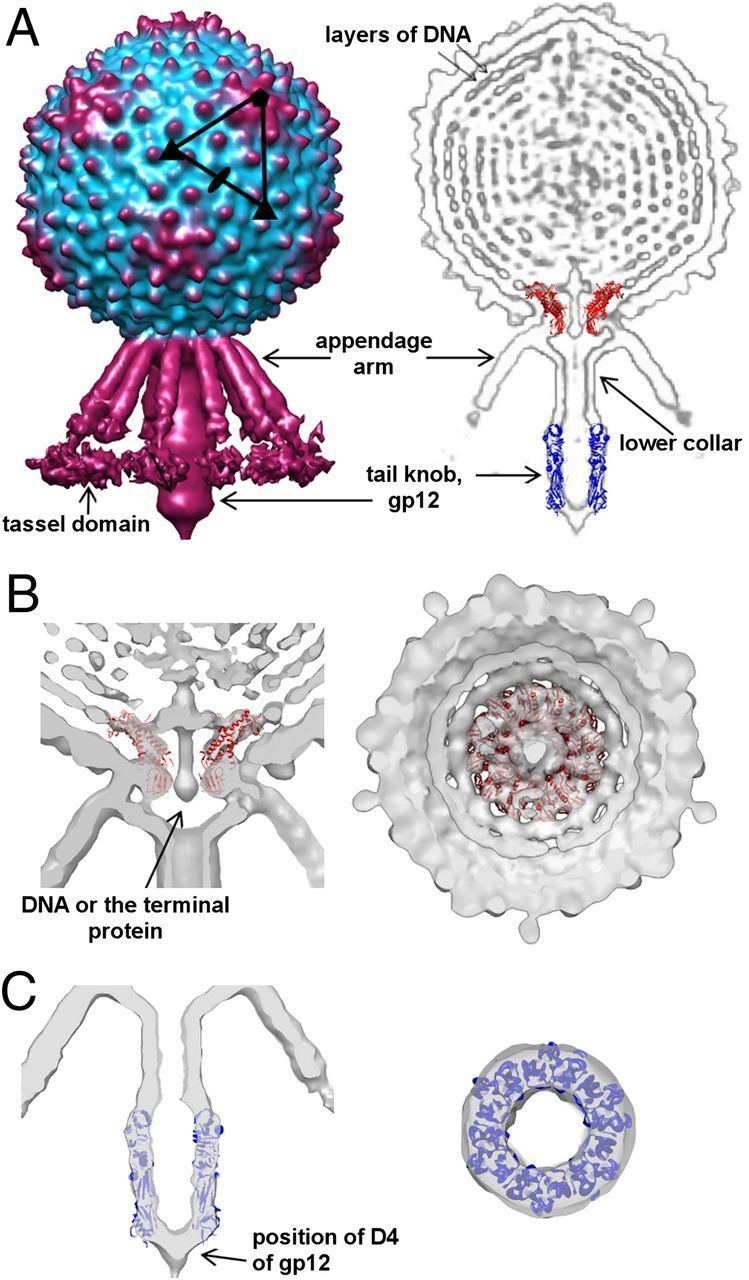
Structure
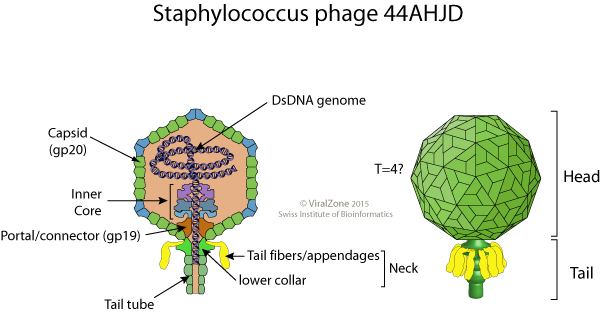
Viruses in Podoviridae are non-enveloped, with icosahedral and head-tail geometries. The diameter is around 60 nm, and consists of 72 capsomers. The head protein has a molecular mass of ~38 kiloDaltons and is present in 460 copies per virion. There are 9 structural proteins. The tail is non-contractile and has 6 short subterminal fibers. It is thick and rod-shaped and built of stacked disks. The maximum length is ~17 nm.
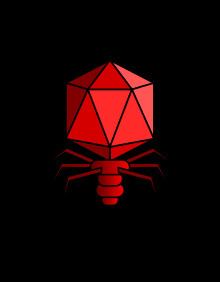
The double stranded DNA genome is linear, around 40-42kb in length, and encodes ~55 genes. The guanine + cytosine content is ~50%. It has terminally redundant sequences and is nonpermuted. By weight, the genome constitutes ~50% of the viron. The genome encodes 9 structural proteins, an adenylated transferase B type DNA polymerase and an RNA polymerase. Three internal proteins constitute the polymerase complex. Two classes of genes are recognized (early and late). This classification is based on the timing of transcription that is temporally regulated. Genes with related functions are clustered together. Genome replication is bidirectional.
Life Cycle
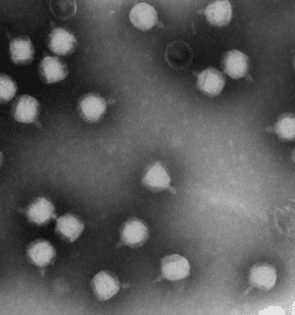
Viral replication is cytoplasmic. Entry into the host cell is achieved by adsorption into the host cell. Replication follows the DNA strand displacement model. DNA-templated transcription is the method of transcription. The virus exits the host cell by lysis, and holin/endolysin/spanin proteins. Bacteria serve as the natural host. Transmission routes are passive diffusion.
Taxonomy
Genera within this family have ~40% homology between corresponding proteins. Subfamiles have ~20% homology between corresponding proteins.

This family is divided into two subfamiles (Autographivirinae and Picovirinae) and a number of genera awaiting classification into subfamilies.
Group: dsDNA
Proposed genera
The following genera have been proposed but are not currently ratified by the International Committee on Taxonomy of Viruses:
